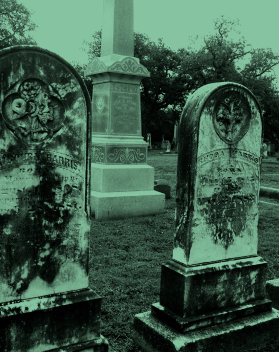41 years ago in 1981, Barton Creek Square Mall opened its doors and became the third Mall option for Austin shoppers.
Highland Mall had opened in 1971, and Northcross Mall in 1975 and
although, as the crow flies, Barton Creek Square was much closer to the city center than
the cluster of shops to the north. The vacant land to the southwest didn’t experience
significant growth until later than the expanding North Austin.
The Colorado River has always impeded the growth of Austin expansion to the
South and Southwest. Even by the turn of the century, 61 years after the birth of our
Capital City there was still only one bridge spanning the Colorado.
The geologic upheaval 20 million years ago, the Balcones Escarpment, which
runs through Austin, also made growth to the west and east less desirable. On the east the
clay and black dirt which originally found its way to the area from the rivers and
waterways running from the high plains to the Gulf Coast; and to the west of the city the
earth’s foundation consisted of hills and cliffs of bedrock limestone. But deurbanization,
or suburbanization continued to evolve and the huge hill overlooking the city and Barton
Springs began to look pretty good to developers in 1981.
A perfect location for a mall.
Melvin Simon and Associates from Indianapolis bought the hilltop land from the
Dellana family and began designing and constructing the 1.5 million square foot, 2 level,
Baron Creek Square on the 104-acre site and in the summer of 1981 the mall finally
opened. By the time Barton Creek Square was under construction Westlake had long
since incorporated itself as its own city. The changing commercial focus from urban
centers to the suburbs was well underway and influencing the little city. The anticipation
of the extension of Mopac South and Loop 360 also added to the increase in new
subdivisions, most in the upper-middle income range, with 3 and 4 bedrooms.
My original goal for this article was to substantiate rumors that on the land where
the mall is today, was once where ammunition was made for the Southern Cause during
the Civil War. A prospect that was defiantly a possibility. Contributions to the war effort
were taking place everywhere in and around the city. In the Land Office, next to the
Capital a furnace was installed and a cartridge machine built. It was operated by women
and made 14,000 cartridge shells a day. Boys to young to go to war filled them with
gunpowder and balls and then packed them in boxes. Each box contained 1000
cartridges.
In Westlake Dellana was packing bat guano from caves on his property and
sending it down a shoot and dumping it onto a barge parked on the Colorado and then sent to Manchaca to make gunpowder and later to fertilize their orchards.
After talking with Jerry Dellana and Gayle Halston we concluded that the
prominent hilltop may have been host to many historical events, but Civil War
ammunition manufacturing was not one of them.
I DID, though, discover that the awkward curve in Loop 360, by the Texaco, was
constucted to avoid the Stoneridge Cemetery. And there would have been another curve to
avoid the Tucker Cemetery if the road crew had known it was there. Luckily, road
construction passed by the little family cemetery without disturbing the graves, but only
by about 100 yards.







